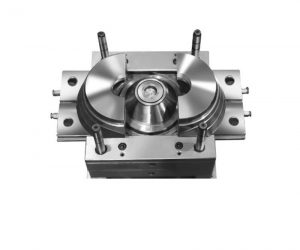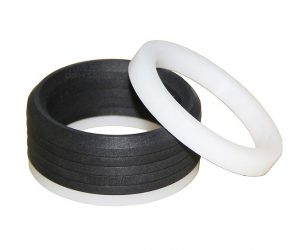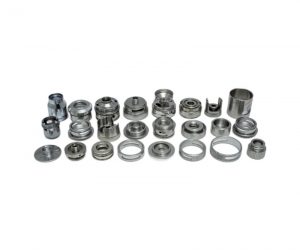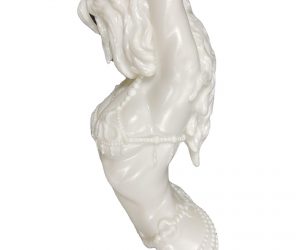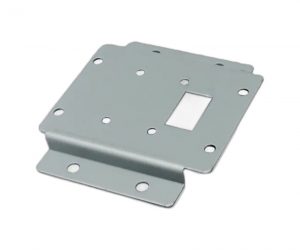The sprue, a seemingly mundane component within the intricate choreography of injection molding, holds a position of paramount importance. Its seemingly simple function – channeling molten polymer from the injection machine to the mold cavity – belies a profound influence on the entire process, impacting efficiency, cost, and ultimately, product quality. This analysis delves into the multifaceted nature of sprue design, revealing the subtle complexities that separate effective design from catastrophic failure.
The sprue, often erroneously conflated with the runner system as a whole, is the initial conduit, the gateway through which the viscous polymer torrent surges. Its design is not merely a matter of connecting points; it's a carefully orchestrated dance between fluid dynamics, thermodynamics, and material science. The sprue's primary function is the efficient and controlled delivery of the molten polymer, ensuring complete cavity fill while minimizing shear forces, pressure drops, and thermal degradation. Failure in any of these aspects can lead to a cascade of defects, from short shots and weld lines to sink marks and warpage.
Optimal sprue design necessitates a holistic approach, considering several crucial parameters:
- Melt Flow Dynamics: The sprue geometry must facilitate laminar flow, minimizing turbulence and the associated formation of voids and non-uniformities within the polymer stream. This often involves careful consideration of the sprue's cross-sectional area and its gradual tapering to manage the velocity profile. The impact of non-Newtonian fluid behavior, inherent to most molten polymers, must also be explicitly addressed.
- Thermal Management: The sprue acts as a heat exchanger, constantly exchanging energy with the surrounding mold. Premature solidification within the sprue can lead to incomplete filling, while excessive heat transfer can degrade polymer properties. This necessitates a detailed analysis of heat transfer coefficients and the optimization of sprue dimensions to achieve a controlled cooling rate.
- Pressure Dynamics: The pressure drop across the sprue directly impacts the filling time and the uniformity of the polymer distribution within the mold cavity. An improperly designed sprue can lead to pressure fluctuations that cause defects such as jetting or short shots. Computational fluid dynamics (CFD) modeling plays a crucial role in predicting and mitigating these pressure-related issues.
- Gate Integration: The sprue's design is intrinsically linked to the gate location and type. The transition from the sprue to the gate must be seamless, avoiding abrupt changes in flow direction or cross-sectional area that could lead to flow disturbances.
Beyond the fundamental design principles, the selection of the sprue type – straight, tapered, submarine, or other variations – depends on the specific mold geometry, the polymer being processed, and the desired production rate. Each type presents its own set of advantages and disadvantages, requiring careful consideration of the trade-offs between simplicity, cost, and performance.
the sprue, far from being a simple connecting channel, is a critical design element in injection molding, demanding a sophisticated understanding of fluid dynamics, heat transfer, and material science. Its optimization is not merely a matter of adherence to established rules but a continuous process of iterative design and refinement, aimed at maximizing efficiency and minimizing defects. The pursuit of optimal sprue design is a testament to the intricate interplay between engineering principles and manufacturing realities.
What is an injection mold sprue?
An injection mold sprue is a passage that lets molten plastic flow into the mold from the machine's nozzle. It's like a tube running through the whole thickness of the mold (the A plate). The sprue's opening is sealed tightly to the nozzle with a special bushing.
The sprue is part of the injection mold gating system, which also includes runners and gates. This system controls how the molten plastic moves and spreads in the mold, which directly impacts the quality and performance of the final parts.
What is the function of the sprue?
The sprue: A seemingly innocuous component of injection molding, yet its role is far more nuanced and critical than initially apparent. It functions not merely as a conduit, but as a rheological regulator, a pressure reservoir, and a crucial element in process control, impacting part quality and manufacturing efficiency in profound ways.
Consider the sprue's hydrodynamic influence. Its meticulously engineered geometry—cross-sectional area, length, and potentially even internal profiling—dictates the velocity profile and shear forces experienced by the molten polymer as it transitions from the high-pressure injection nozzle into the mold cavity. This precise control is paramount; insufficient flow leads to short shots and incomplete filling, while excessive velocity can induce turbulence, generating undesirable weld lines, voids, and orientation-dependent mechanical properties. The sprue, therefore, acts as a crucial damping element, mitigating the potentially chaotic energy transfer from the injection process to the delicate filling of the mold.
Furthermore, the sprue's volumetric capacity functions as a dynamic reservoir, compensating for fluctuations in injection pressure and melt flow rate. This buffering effect is particularly critical during the initial stages of mold filling, where the rapid pressure drop can otherwise lead to inconsistencies in part density and dimensional accuracy. The sprue's ability to momentarily store excess melt ensures a continuous, even flow, minimizing the risk of hesitation marks or flow-induced warpage.
Beyond its role in the primary injection phase, the sprue plays a vital part in purging operations. The efficient removal of residual material during color or material changes hinges on the sprue's ability to facilitate complete evacuation of the flow channels. Improper purging, a consequence of inadequate sprue design or operational procedure, can lead to significant material waste and compromise the integrity of subsequent parts through contamination.
Finally, the sprue's post-molding fate—separation and typically recycling—highlights its contribution to overall manufacturing sustainability. Its design, therefore, must consider not only its functional role in the injection process but also its ease of removal and suitability for efficient material recovery, minimizing waste and contributing to a more environmentally responsible manufacturing process. In conclusion, the sprue's seemingly simple function belies its complex and multifaceted contribution to the success of injection molding, impacting product quality, process efficiency, and environmental sustainability.
How to design an injection mold sprue?
The design of the injection mold sprue affects the quality and efficiency of injection molding. Some of the factors to consider when designing a sprue are:
- Diameter: The diameter of the sprue should be large enough to allow sufficient material flow into the mold cavity, but not too large to cause excessive pressure drop or material waste. A general rule of thumb is to make the diameter of the sprue 1.5 to 2 times larger than that of the runner.
- Length: The length of the sprue should be as short as possible to minimize heat loss and material waste. However, it should not be too short to cause excessive shear stress or friction on the molten plastic. A general rule of thumb is to make the length of the sprue equal to or slightly less than its diameter.
- Taper: The sprue should be tapered in the direction of the nozzle end, meaning that it should have a smaller diameter at the nozzle end than at the runner end. This helps to control material flow and prevent air bubbles. The taper angle should be between 3° and 5°.
- Radius: The sprue should have a smooth radius at both ends, especially at the nozzle end. This helps to reduce stress concentration and prevent cracking or breaking of the sprue during ejection. The radius should be between 0.5 and 1 mm.
What are the different types of sprues?
There are two main types of sprues in injection molding: cold sprues and hot sprues.
Cold Sprues
Cold sprues are made of steel or other metals that have a lower thermal conductivity than plastic. They are attached to a cold runner system that also cools down and solidifies during injection molding. Cold sprues are cheaper and simpler than hot sprues, but they have some disadvantages:
- They require more material and energy consumption, since they need to be filled with molten plastic every cycle.
- They generate more scrap material, since they need to be trimmed off from the molded parts after ejection.
- They can cause defects such as jetting, weld lines, or cold slugs due to inconsistent temperature or flow rate.
Hot Sprues
Hot sprues are made of steel or other metals that have a higher thermal conductivity than plastic. They are attached to a hot runner system that maintains a constant temperature and flow rate during injection molding. Hot sprues are more expensive and complex than cold sprues, but they have some advantages:
- They reduce material and energy consumption, since they do not need to be filled with molten plastic every cycle.
- They eliminate scrap material, since they do not need to be trimmed off from the molded parts after ejection.
- They improve quality and performance of the molded parts, since they provide a uniform temperature and flow rate.
What are the best practices for sprue location?
The location of the sprue affects the filling and cooling of the mold cavity, and therefore the quality and performance of the molded parts. Some of the best practices for sprue location are:
- Locate the sprue at the thickest section of the part, where it can effectively fill the cavity and minimize the risk of defects such as voids, sink marks, and warpage.
- Locate the sprue at the center of the part, where it can provide a balanced and symmetrical filling and cooling pattern.
- Locate the sprue away from any critical features or dimensions of the part, where it can avoid causing stress concentration or distortion.
- Locate the sprue on a flat or slightly curved surface of the part, where it can easily be trimmed off or hidden.
Conclusion
imagine this tiny path called a sprue in an injection mold. It's like a little tunnel that lets the melted plastic flow from the machine into the mold where the part takes shape. This sprue is super important because it helps control how the plastic moves around inside the mold.
Now, the way this sprue is made and where it's placed can really change how good and fast your parts turn out. There are two main kinds of sprues: cold ones and hot ones. Each has its own ups and downs.
If you get smart about designing and placing your sprue just right, you can make your injection molding process work better and end up with awesome quality parts.
